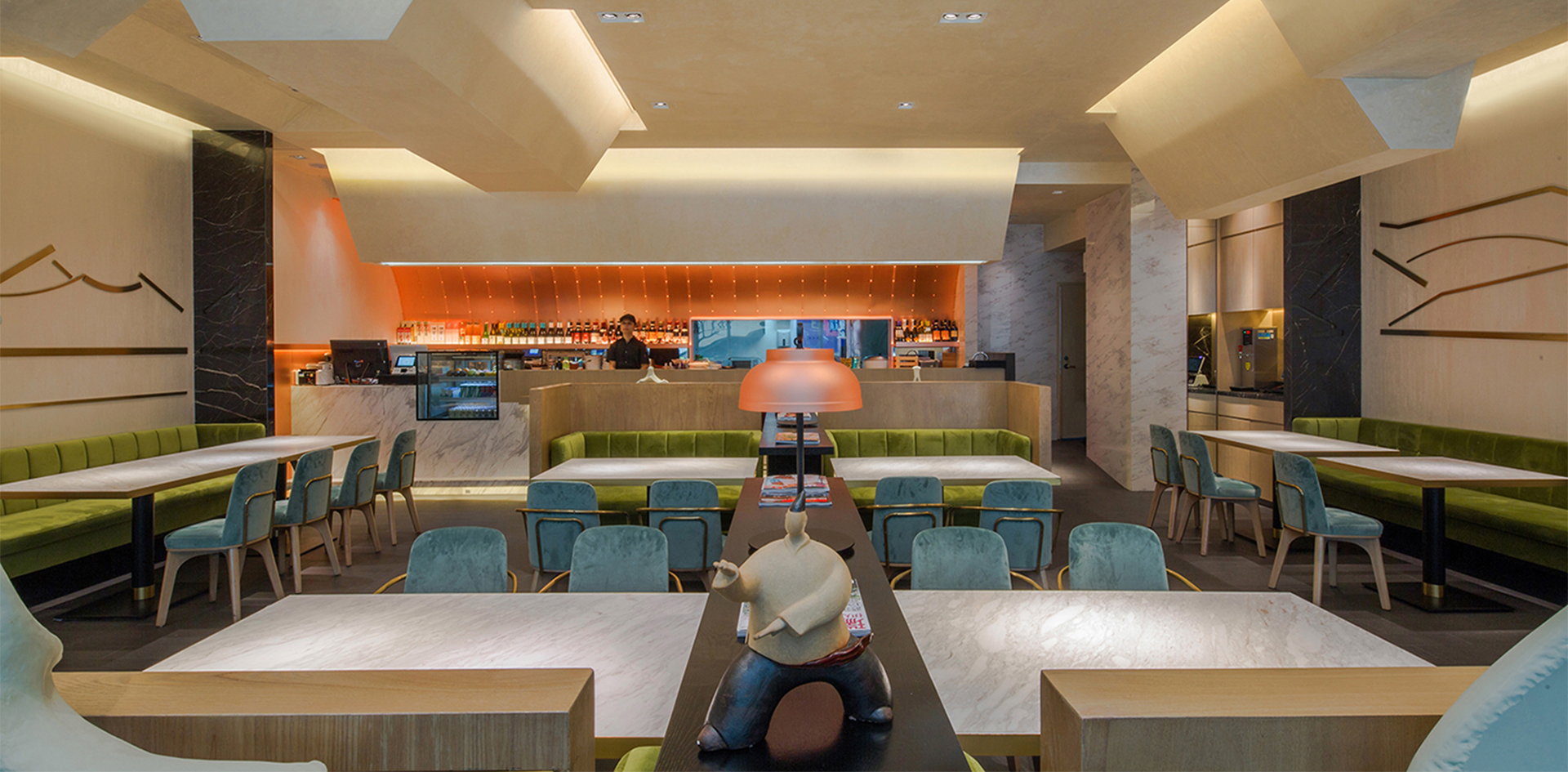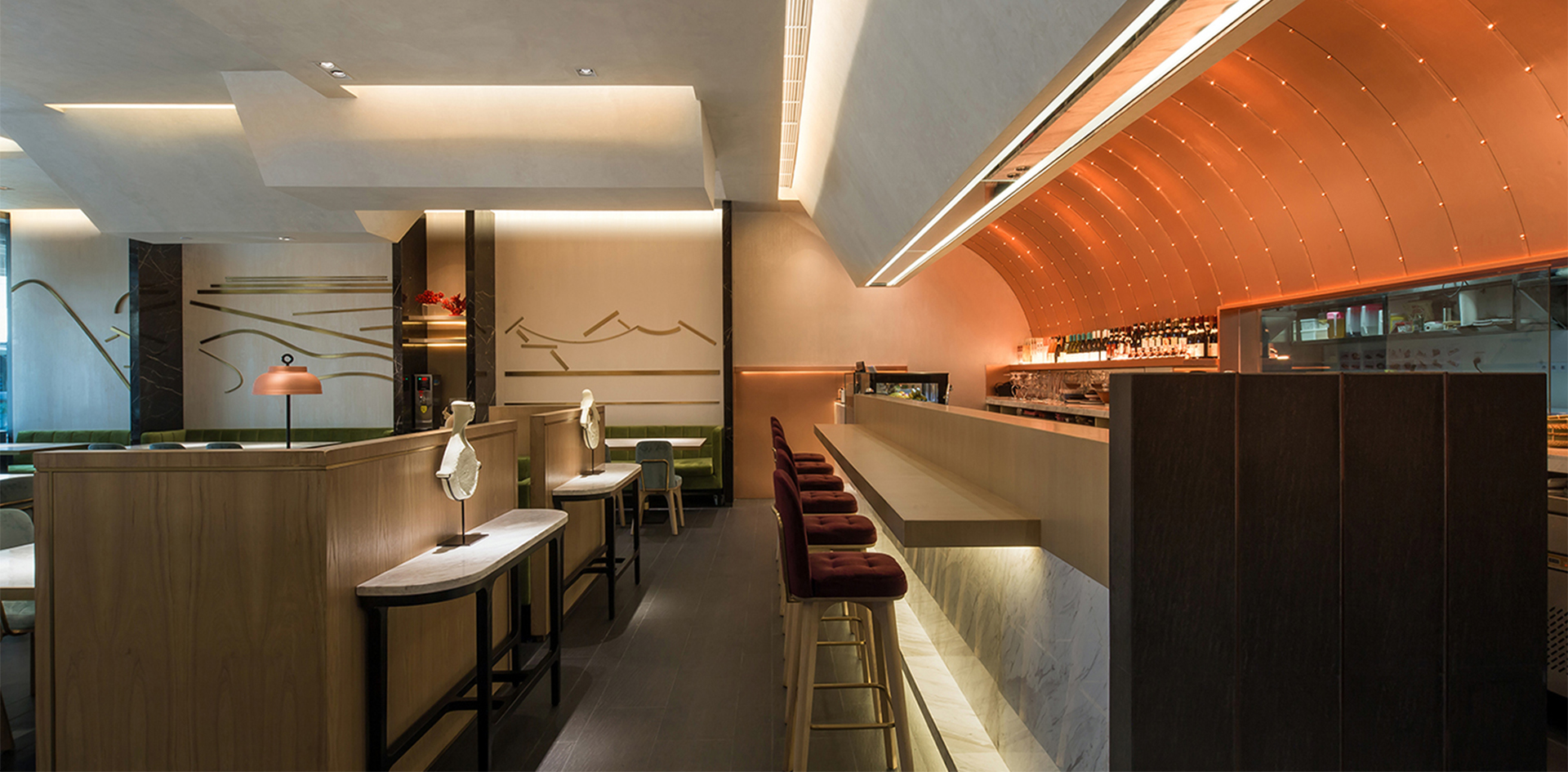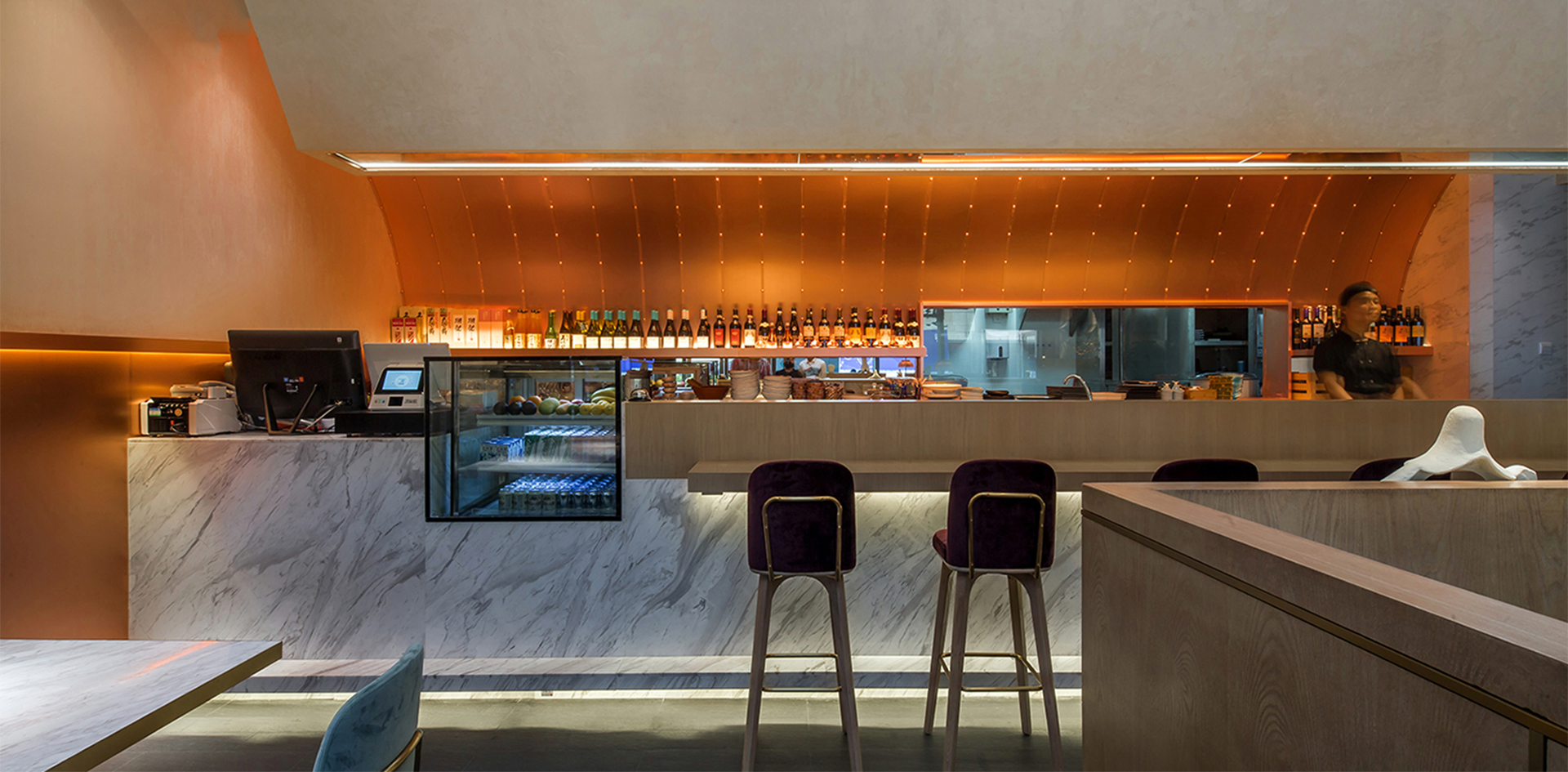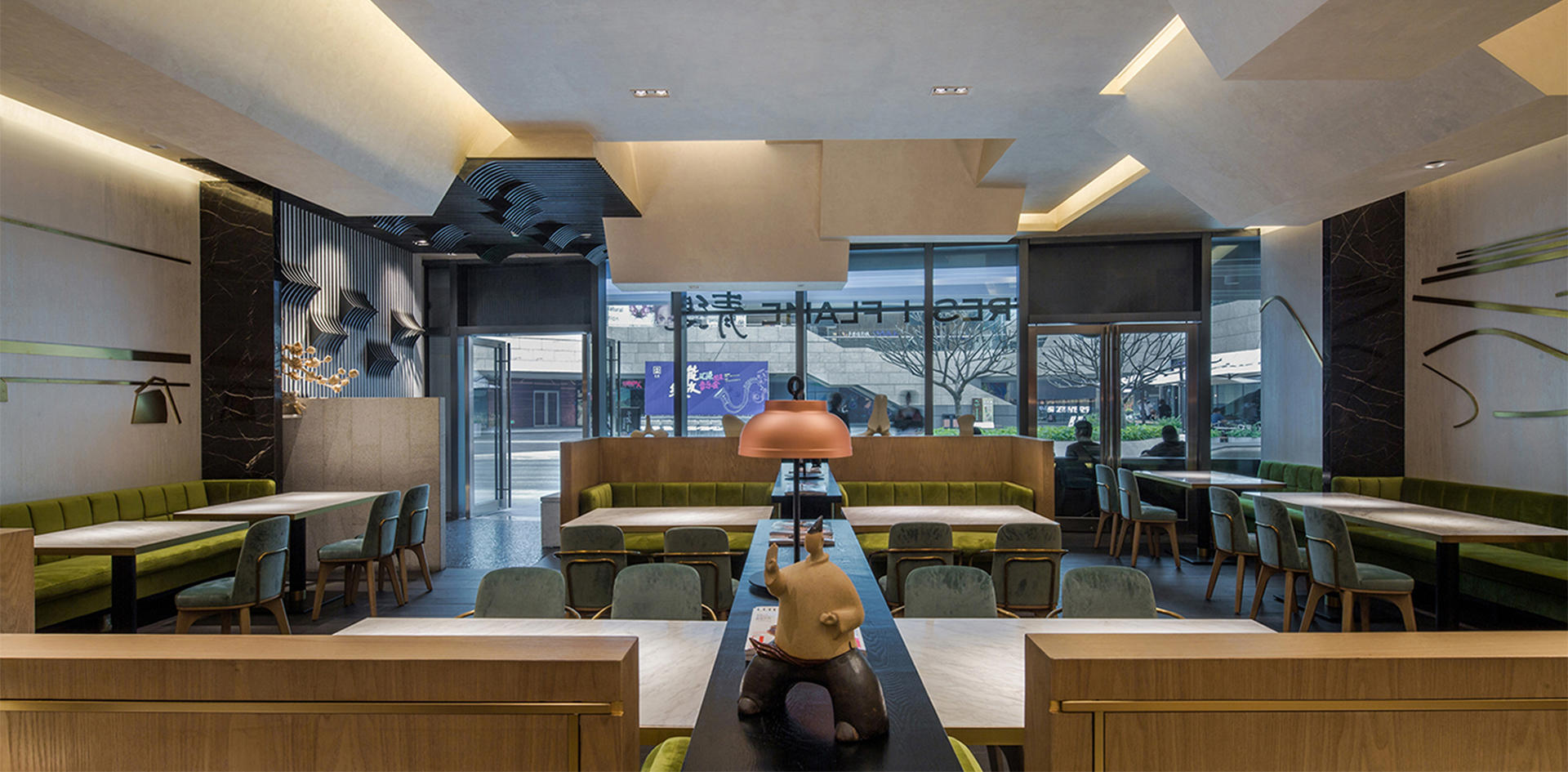
QINGTI
The wind and smoke are all clean, and the Tianshan Mountains share the same color. Either attracted by the dim light, or attracted by the aroma of the restaurant, unconsciously looking up, it is the Japanese cuisine.
Looking at it, grey stone and white screen, withered trees bloom; a mat of ebony waves grows from the bottom of the earth, climbs up the wall and dissipates in the sky. The vision falls with the end of the wave, which is a jade glass, real and illusory waterscape. So insidious and so natural. A ink mark with a long poetic.
The waves gradually dissipated, and then left rolling mountain traces on both sides of the walls and ceilings. On both sides of the body, separated by pieces, sparse copper bars, sketching a landscape verve; overhead clouds, layers of peaks, dense light, permeate and slowly sprinkle.
So, with the flow of water, the sea is connected to the mountains, and the mountains are reflected in the sky. By using the height difference above the original space, the sea, mountain and sky are cleverly combined to give a moderate stimulus to the visual inertia balance. The copper bar art of partition wall is extracted from the landscape works of Japanese master Saito Qing, which breaks the traditional rigid design. One tree, one flower, one scene is the same, just like the restaurant‘s cuisine itself, simple and extraordinary, plain but not rare.
At the end of the sky, copper strands like the rainbow, like the afterglow, fall at the finishing point of the restaurant. The bar is also a stage for the craftsman to display his skills. Japanese cuisine is quiet and focused; the craftsman‘s hands are steady and flexible. Temperament flow, the same mountain, the same sea, the same day, naturally.
2020|03





